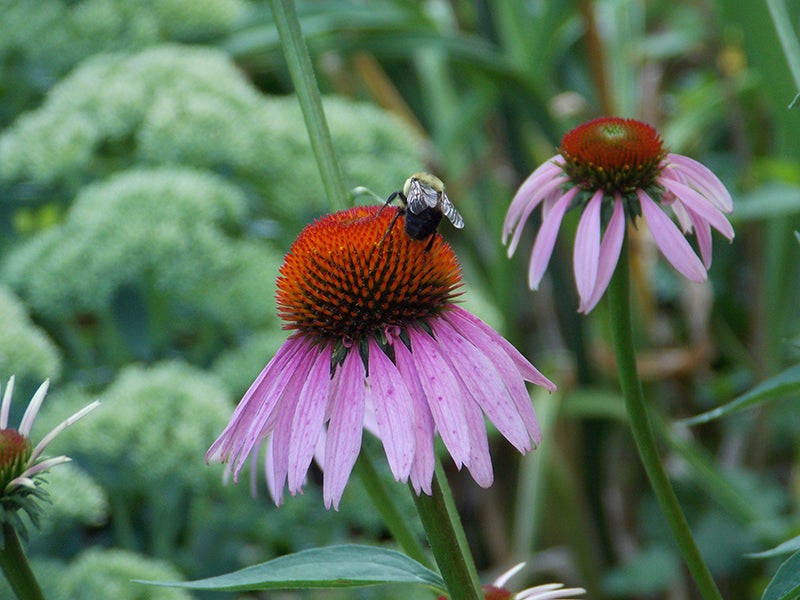A question-and-answer about gardening issues
Published 9:00 am Saturday, October 14, 2017

- A bee is enjoying nectar on Echinacea purpurea species, a better choice for pollinators. - Carol Hegel Lang/Albert Lea Tribune
Carol Hegel Lang is a green thumb residing in Albert Lea. Her column appears weekly. Email her at carolhegellang@gmail.com.
I have been getting questions about varied topics lately, so I thought I would try to address a few of them today.
When is the best time to plant milkweed seeds?
Plant your milkweed seeds when the ground temperature is 65 degrees or cooler (usually about Halloween). It is very easy to plant the seeds if you observe a few directions.

Carol Hegel Lang
Most milkweed plants thrive in full sun, but rose milkweed and common will tolerate a bit of shade. The first thing I do is rough up the soil a bit and then sprinkle it with water. This way, when the seeds touch the soil, there is good contact. Sow the seeds, lightly dust with either soil or sand and tamp down gently with your hoe and water well. Mark the location, as milkweed is slow to come up — often not until early June — if it is a cool spring.
Why do my petunias get straggly and stop blooming like they did early in the season?
Some plants need iron and most fertilizers lack it. A few years ago, Tony Hill and I had a discussion about the beautiful pink shades of Supertunia Vista series that grow in the containers in front of their garden center. I was having trouble keeping mine looking full and noticed some lighter foliage sprouting when the flowers seem to quit producing more blooms. He suggested that I feed them Jack’s Petunia FeED when I watered, or at least weekly. Cut the blooms back in late July for more fullness.
Also, containers and hanging baskets leach out nutrients every time they are watered, and even though I was feeding a weak solution of Miracle Gro weekly, they needed iron. This year I didn’t get them cut back until August and they are still going strong!
Why are my impatiens blighted?
One person who talked to me has been growing bedding impatiens for years, and then this year the blight appeared and the plants died. This has been a problem since about 2011, when the Houston Botanical Gardens lost over 11,000 impatiens to mildew. If you had this happen, do not throw the dead plants into your compost pile. The fungus will remain for five years in your soil and is spread through the air. Instead, bag them and throw them in the trash. There is a variety that was developed to fill in this gap for shade gardens, and it is called Bounce.
I have not seen as many impatiens the past two years in garden centers, but then, I wasn’t really looking for them. I have planted them before and they are a nice alternative because of their colors and large size for the shade garden.
The other day, I was reading one of my gardening magazines when the title of the article caught my eye.
What’s the deal with sterile cultivators?
When a cultivator is sterile, it produces more blooms and less seeds all through the season. This usually means a decrease in both pollen and nectar. For example, the double cultivars of Echinacea like ‘Milkshake’ and many others that produce double petals would be sterile. Pollinators would not benefit from them like they would the straight species E. purpurea. If you are planting for pollinators, although the sterile varieties are very handsome, they would not fulfill the needs of pollinators.
Sometimes you have to make the difficult decision of planting pollinator-friendly plants in your garden, or what I call “pretty plants.” I found a workable solution of planting a few sterile plants and more pollinator-friendly plants. One of the hybrids I plant is snow princess lobularia (or alyssum, as most people call it) although I have found plenty of bees feeding on it. I need a plant that will fill and spill over a large container and the “dark knight” series won’t do that. I compromised and plant both of them for the bees.
“How beautifully leaves grow old. How full of light and color are their last days.” — John Burroughs


